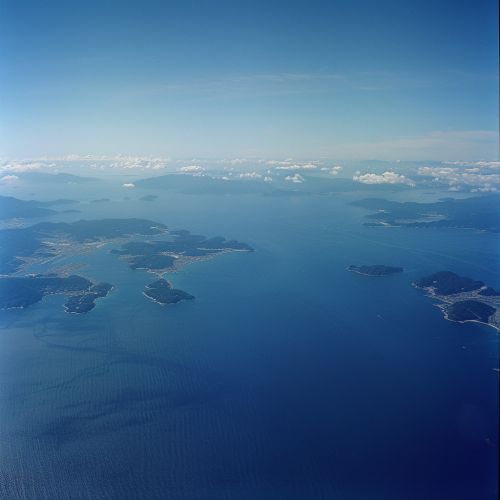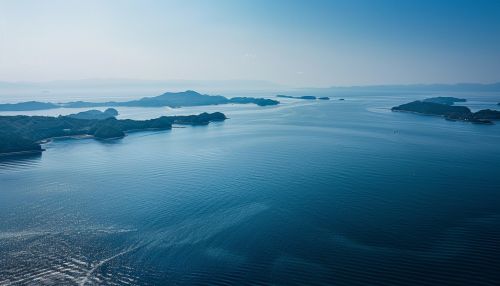Sea of Japan
Geography
The Sea of Japan is a marginal sea of the western Pacific Ocean, bounded by the Asian mainland, the Japanese archipelago, and Sakhalin. It is bordered by Japan, North Korea, Russia and South Korea. The sea extends from the Sea of Okhotsk in the north to the East China Sea in the south. The Sea of Japan is connected to other parts of the Pacific Ocean by the Tsushima, Tsugaru, and Soya Straits.


Hydrography
The Sea of Japan is a semi-enclosed sea characterized by its depth, with the average depth being about 1,752 meters and the maximum depth reaching 3,742 meters in the Japan Trench. The sea floor of the Sea of Japan is divided into three major basins: the Japan Basin, the Yamato Basin, and the Tsushima Basin.
The Sea of Japan experiences a wide range of water temperatures, with the surface water temperature ranging from -1.8°C in winter to 26°C in summer. The sea is known for its rich nutrient content, which supports a diverse marine ecosystem.
Climate
The climate of the Sea of Japan region varies greatly due to the sea's geographical location and depth. The western part of the sea experiences a humid continental climate, while the eastern part experiences a humid subtropical climate. The sea has a significant impact on the climate of the surrounding regions, influencing precipitation patterns and seasonal temperatures.
Marine Life
The Sea of Japan is home to a diverse range of marine life, including numerous species of fish, mollusks, crustaceans, and marine mammals. Some of the notable species found in the sea include the Japanese flying squid, the Pacific saury, and the Japanese spider crab. The sea also serves as a major breeding ground for various species of birds.
Human Interaction
The Sea of Japan plays a significant role in the economies of the surrounding countries. It is a major source of fish and other seafood for Japan, South Korea, and Russia. The sea also serves as a crucial shipping route, connecting the ports of the Pacific Ocean with those of the Sea of Okhotsk and the East China Sea.
Environmental Issues
Various environmental issues affect the Sea of Japan, including overfishing, pollution, and climate change. These issues have led to a decline in fish stocks and have threatened the sea's biodiversity. Efforts are being made to address these issues and preserve the sea's ecosystem.
